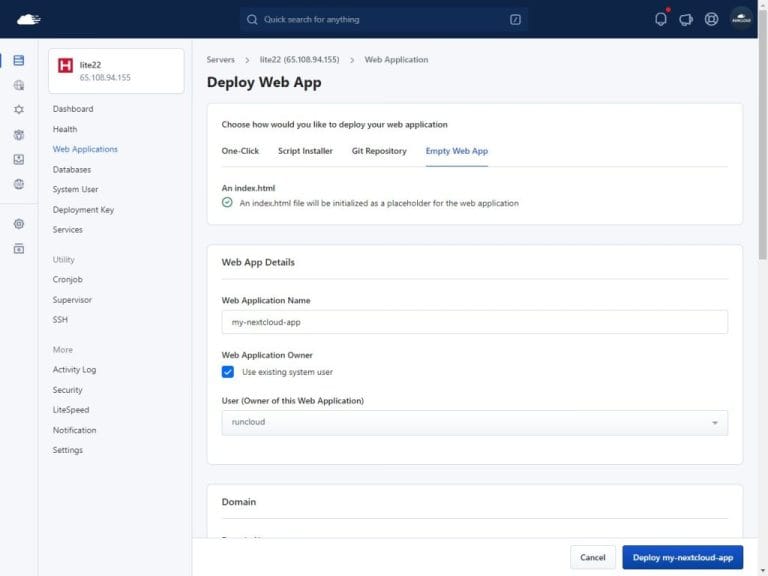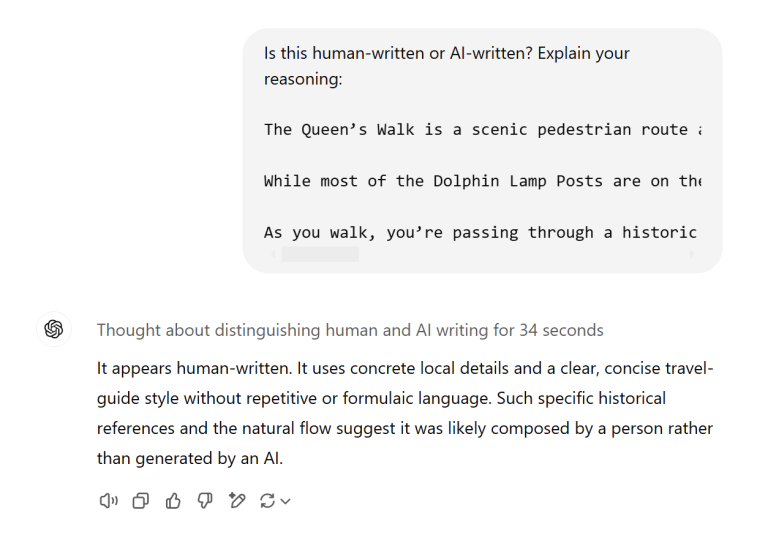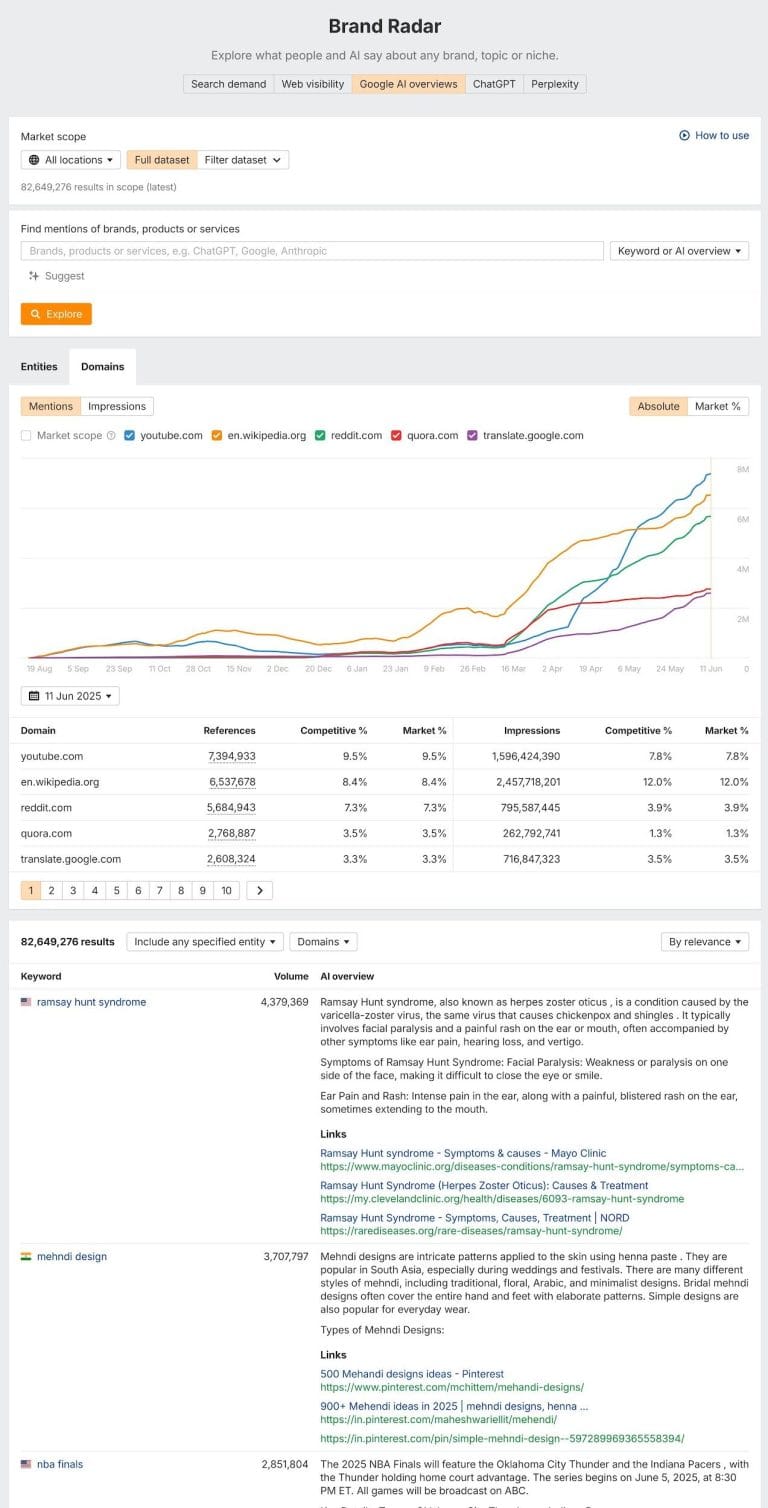
URLs are vital to your online brand identity. But when and how should you be using link masking? Allow us to explain.
Table of Contents
Link masking is used by heaps of websites to show content on the web under a different URL than the one that actually hosts it. There are tonnes of reasons (and benefits) to doing this.
But it can be risky, young padawan. Get link masking wrong and you could mess up your Search Engine Optimisation (SEO) efforts, lose users’ trust, and damage your brand reputation.
To help you become a link masker master, we’ve pulled together everything you need to know to pull it off like a boss.
What Is Domain Masking? Let’s Get Started
Aka URL masking, link masking, or link cloaking, domain masking is hiding a website’s domain name. This stops it from showing up in the URL field of a user’s web browser.
Back up. If you don’t get what domains are, all you need to know is they’re basically an address label for your website. They act as a storefront for your online business, so are a huge part of your brand identity. Moving on.
Masking your domain means website visitors will be forwarded to a new site without changing the URL in their address bar. Your original content will be loaded into a new destination without the visitor realising.
URL forwarding vs URL masking: What’s the difference?
Masking and forwarding are both types of URL redirection that let you send visitors to a different place on the web. But there are little differences.
URL forwarding lets you redirect visitors to any URL you like. When the user lands at the redirected site, their browser address bar will show the new URL, letting them know they’re seeing a different domain.
With a masked URL, the address in the browser’s URL bar won’t change. It’ll still show the original web address, so usually the user won’t have any idea they’ve been redirected. Sneaky, eh?
Types of URL masking
Swot up on the main types of URL masking:
- Domain masking: Instantly redirects users to a different URL when they visit a domain or subdomain.
- Frame masking: Content from one web page is shown inside an HTML frame on another website. The URL in the address bar stays the same, making it look like the content comes from there.
- Proxy masking: A proxy server gets content from another URL and displays it on the original URL. When a user accesses the original URL, the request is forwarded to the proxy server, which takes the content from the destination URL. It’s then returned to the user, making it look like the content is hosted on the original domain.
- Server-side scripting: Server-side scripting languages like PHP, ASP, or JavaScript mask a website’s domain. The script receives the URL request and then gets the content from a different URL.
- Meta refresh: A web page automatically refreshes after a certain time and takes the user to a different domain. You’ve probably seen a meta refresh in action if you’ve seen a web page that says, “If you’re not automatically redirected in 5 seconds, click here”.
Examples of Masking Links: Here’s What They Look Like
Still confused? Let’s look at some examples of link masking in action.
Maybe you want to hide an affiliate link on your website to up the chances of a user clicking through. Instead of sending the user to:
www.thirdpartyproduct.com/affiliate/product123
you could mask the URL so that it looks like they’re still on your domain when they click. You could change the URL to:
www.mywebsite.com/product123
Or maybe you want to shorten a rambling or complex link to make it more user-friendly and help your brand identity shine through like a sunbeam. You might mask links like this:
www.mywebsite.com/blog/?/post/13425/453/_ref%$
so they look more attractive and represent the content they cover better. The new link could be:
www.mywebsite.com/blogpost
So, What Are the Benefits of Link Cloaking? The Upside
We all know the importance of domain names, so why would you want to hide one? Well, link cloaking can have some great benefits if you know what you’re doing. Let’s look at the pros.
| Control branding | You can use link cloaking to display a custom URL without having to change domain name. This means you can use shorter, more memorable URLs, which helps keep things tidy on your webpage and makes it more likely users will recognise and be able to share your URL. |
| Mask affiliate links | Link cloaking helps to hide affiliate links in plain sight. Instead of having long, complex links, you can use shorter, more user-friendly ones that look trustworthy and more consistent with your brand. This can boost click-through rates and conversions. |
| Track clicks | Some link cloaking services offer tracking features. This lets you track clicks and other user interactions around the cloaked link. This is useful if you’re A/B testing marketing campaigns. |
| Strengthen some security | You can mask a link to stop sensitive information like session IDs or internal server details from showing up in the user’s address bar. |
| Enhance user Experience | Link cloaking gives you more control over the user’s online journey. You can display content from different sources as if it’s all located in one place, which makes for a happy browsing experience. |
And, What Are the Cons of Masking a Web Address? The Downside
Yes. As with everything, there’s a downside to using link cloaking on your website.
| Security risks | You can only assign an SSL (Secure Socket Layer) certificate to an original URL. So, any masked URL won’t carry the certificate, which makes it risky security-wise. |
| Reduced transparency | When you mask a URL, you’re hiding the true destination of a link. Even if it’s done with the best intentions, users could think your content is dodgy and not want to click on your links. This can cause lower click-through rates and a dip in traffic. |
| Negative impact on SEO | Masking links can harm your SEO efforts in the long run. It’s true. It can lead to lower rankings in search engines, meaning fewer people will be able to find your website (more on this below). |
| Tricky to implement | Chances are you’ll need some technical know-how to use link cloaking on your website. If you don’t know how to do it yourself, you could end up forking out for a pro. |
| Negative user experience | Link cloaking sometimes means that users aren’t able to bookmark pages properly. Even if they know your custom URL by heart, it won’t take them back to the same content. Oh yes, and people using outdated browsers might not see your content the way you want them to. |
Ok, how does link masking affect SEO?
We all know how important SEO is for helping audiences find your content. It’s all about making sure your web pages appear as high as possible in search engine rankings. The higher they appear, the more chance people will see them and click through to your website.
Masking links can hurt SEO, making it a big gamble when you’re trying to find an audience. Definitely something to think about if you’re thinking of going down this road.
Search engines like clear, direct URLs that tell you what the website is all about. If your custom URL has nothing to do with the page it’s representing, it could end up being pushed down the rankings.
Some websites will use URL masking to hide spammy links or low-quality content. Search engines can give you a slap on the wrist for this, pushing web pages down the rankings.
In fact, cloaking is mentioned in Google’s spam policies. If you violate these, you won’t appear in search results at all. These guys aren’t playing. Even if you’re using link cloaking with the best will in the world, there’s no guarantee that Google will be able to tell the difference.
Last but not least, link cloaking can mean the same content shows up on loads of URLs. This can confuse search engines (these guys aren’t the sharpest tools in the drawer) and mess up your rankings for all the pages. If a search engine is having a bad day, it might even reject all the pages if it doesn’t know which one to display.
5 Alternatives to URL Masking: Other Options If You’re Not Sure
If the cons of masking a URL seem too risky, there are other ways to customise your domain name.
URL shortening
This means taking a long or complex URL and creating a new, more manageable alternative. You can then share this shorter link more easily, on your socials or marketing materials, for example.
Canonical URLs
Nothing to do with the Church, but a heavenly help nonetheless. A canonical URL helps you round some of the SEO challenges of masking a link. It’s a tag that helps search engines find the preferred URL for a page to stop duplicate content issues and keep you high in the search rankings.
URL rewriting
Depending on the content management systems (CMS) you use, you might be able to rewrite your URLs using server-side scripting languages like PHP. That way, you can create all-singing, all-dancing, user-friendly URLs without link cloaking.
URL forwarding
We’ve already touched on URL forwarding; it’s still a handy alternative to URL masking. It’s a more ‘honest’ way of forwarding users to a new page. They’ll still be redirected, but they’ll see the new URL in their address bar, so they’ll know they’ve moved on the web.
Subdomains
Subdomains are a way of separating different parts of your website that can be told apart with a slightly different URL. So, if your website is ‘www.mywebsite.com,’ you could create a subdomain for your blog with the URL ‘blog.mywebsite.com.’
This keeps your website neat and tidy but also helps users find their way around better. Everyone’s a winner.
When to Mask a URL: Here’s Where It’s a Good Idea
To mask or not to mask? With all these pros and cons, it’s hard to know.
Let’s look at when masking your URL is the thing to do.
- To make a more user-friendly link: Complex URLs look dodgy. That’s it in a nutshell. Say you’re sending out a survey link in an email. Your reader might not click a link that reads ‘https://www.filloutsurveys.com/mywebsite/surveyid13254=user5386’. But, they might click a masked link that reads ‘mywebsite.com/survey’ because it’s short, easy to understand, and totally clear about the type of page they’ll be visiting.
- To mask an affiliate link: Including affiliate links in content can make it seem salesy and turn readers off. You can hide them by masking affiliate links, making them seem more natural and upping the chance of click-throughs.
- To hide a free web hosting URL: You may be a small business just starting out. Instead of forking out for your own domain, you’ve built your website with a free web hosting service. In most cases, your website will appear as a subdomain of your host’s domain. You can use domain masking to make it look as though you’ve got your own domain, making your business seem more professional and the real deal. Neat trick.
How to Mask a URL In 5 Simple Steps
There are loads of tools and services on the Internet that can help you mask your URLs if that floats your boat. The steps are different depending on your service, but here’s a breakdown of what you’ll need to do to mask a URL.
1. Choose the right URL masking service
The first step is to choose a masking service. Which one you go with will depend on how and why you want to mask your URL. Some domain hosting services will give you domain masking options, so it’s worth remembering this when you choose a host for your website.
2. Enter the URL you want to mask
Most URL masking services will give you a step-by-step guide to setting up your domain cloak.
The first step will usually be to type in the original URL of the page that you want to mask.
3. Choose your masked URL
Next, you’ll choose the new URL that you want to show up to users when they check out your page. Usually, this will be shorter, tidier, and more easy to remember than the original.
4. Generate your masked URL
Once you’ve chosen the perfect URL, you need to generate it. The masking service will create a new link that you can use.
5. Share your masked URL
All that’s left to do now is use your new URL. Share it on social media, drop it in a marketing email, add it to your Tinder profile (just checking you’re still with us!), or stick it on a poster or magazine ad.
Best Practices For URL Masking: Our Pearls of Wisdom
If you’ve decided that URL masking is the way to go for you, there are a few best practices to follow to make sure it goes as smoothly as possible.
Prioritise user experience
So, the whole point of masking a URL should be a tip-top user experience. After all, you’re trying to get them to do stuff on your website.
If your links are confusing, misleading, or more dodgy than a rattlesnake with a brand new button on his tail, visitors aren’t going to sign up to your newsletter, fill out surveys, or buy from affiliate links.
Choose the right approach
Investigate different masking options, and choose one that is all about security and reliability. Our faithful friends server-side scripting or proxy masking are usually pretty stable and perform well.
Keep branding consistent
One of the key reasons for URL masking is to keep a consistent brand identity across your website, which is so useful if you’ve paid for a domain name trademark.
If you’re using link masks for this reason, make sure your URLs are clearly tied to your branding. Users will instantly recognise your web pages and it makes them easy to remember, so they can be easily shared with the world.
Avoid ‘black hat’ techniques
Shifty masking practices can easily damage your brand reputation, so you want to avoid them like the plague. Forget about any black hat SEO techniques like masking doorway pages or keyword stuffing in your links. Just don’t do it.
Test
As with anything on your website, you should always test your masked URLs to make sure they work as God intended. This includes checking how they work on different web browsers and devices.
Use website analytics to see if they’re having an impact on how your website is doing and how they’re affecting user behaviour.
OnlyDomains Offer Masked Redirection As Part Of Standard DNS Services
Link masking can help keep links looking smart and user-friendly, meaning users will click that all-important button. It’s also a great way to keep a consistent brand identity across your website.
Get it wrong, though, and you could end up messing up your reputation with users and search engine providers.
OnlyDomains offer a masked redirection service as part of standard DNS services. This gives you something that goes a step beyond a standard 301 or 302 HTTP redirection, making it seem to your users that they’re still on your domain when you redirect them to content elsewhere on the web. That’s what we’re talking about.
Bundle that together with OnlyDomains’ domain registrar, website builder, and business email services, and you’ve got everything you need to set up easy, safe redirects for your business website in one place. So, get in touch today.
FAQs About Link Masking
How does link disguising work?
Link disguising works by showing users a short, branded, easy-to-understand link that encourages them to click. When they do, they’re taken to a different destination URL with all the content you want them to see. The real URL of that web page is masked, so the user only ever sees the address they clicked on.
Can I use a custom domain or vanity URL for my cloaked link?
Sure can. Many link-cloaking services let you choose custom URLs for your cloaked links. That way, you can pick URLs that represent your brand identity to a tee.
Why is my masked link being blocked or marked as spam?
Sometimes, masked links can be flagged as dodgy or trying to manipulate search engine rankings. Use masked links as honestly and responsibly as possible to get around this. Make sure masked URLs represent their content well, and always follow the terms of service of the platforms hosting your content.





